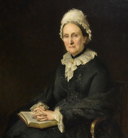
-
Celebrations begin to commemorate 50 years of the University of Dundee
2017 -
The University of Dundee becomes a fully independent institution under the terms of the Royal Charter.
1967 -
Ordinances issued in 1897 made University College form part of St Andrews. and establish a Faculty of Medicine.
1897 -
The Deed formally creating University College Dundee was signed by founders Miss Mary Ann Baxter and her cousin Dr John Boyd Baxter.
1881
Jute
-
date
Fri, 20 Oct 2017
-
Running Time
00:05:34
Ask any local school child what Dundee is famous for and they’ll tell you it’s the three Js: Jute, Jam and Journalism.
Episode Transcript
Ask any local school child what Dundee is famous for and they’ll tell you it’s the three Js: Jute, Jam and Journalism. There are still many reminders of Dundee’s once thriving Jute industry in the city, not least of which is the award-winning museum based in the old Verdant Works. This museum details Dundee’s fascinating relationship with Jute. In addition, the University of Dundee has a wide collection detailing the textile industry in Dundee, including the records of many of the major jute works.
Jute is a rough Indian fibre, which can be used to make burlap, canvas, sacking and twine. In the 1830s, the discovery was made that if Jute was treated with Whale oil, which of course Dundee’s whale industry had in abundance, the spinning of jute fibre was made possible. This led to the golden age of the jute industry in Dundee, which attracted a great deal of rural migrants into the city and also employed a very high proportion of jobs for women. By 1911, women made up three quarters of the industry’s workforce and Dundee was very much a trend-setter in this area because many of these women were married which was incredibly rare at that time in history. In 1911, there were 31,500 people working with jute and this comprised more than 40% of all the workers in the city.
There were several well-known Dundee families who were involved in the Jute Industry. In 1818 William Baxter leased a mill at Glamis and in 1822, in partnership with his eldest son Edward, built his first mill on the Dens Burn in Dundee, thus began possibly the reign of Dundee’s most famous jute barons. Over the 19th and 20th centuries, the firm continued to grow and took over various other companies, diversifying as the market dictated. However, in 1978 the firm finally closed.
The Cox Brothers owned the Camperdown Works in Lochee which was the biggest Jute works in the world. They had previously been involved in the linen industry since the early 18th Century in the same area. The Camperdown works had a work force of 5000 by 1900 and there was even a railway branch just for the works!
Harry Walker & Sons ran the Caldrum Works which was completed in 1873. In 1913 the works covered 8 acres of ground and it was Dundee's second largest jute mill by the 1920s.
In 1920, the industry in Dundee underwent a huge shift when many of the local firms were bought over by Jute Industries Ltd. J Ernest Cox, the grandson of one of the founders of the Cox Brothers firm, became chairman of Jute Industries in 1920 and held the position for 28 years.
Unfortunately, the jute industry became less profitable with the onset of the First World War, when it became much cheaper to import finished jute products directly from India. By the middle of the twentieth century, less than a fifth of Dundee's workers with jute and there were 62% less women employed.
Commercial jute production in Dundee came to an end in the 1970s, although some manufacturers moved into the production of linoleum and some synthetic fibres. Camperdown Works closed in 1981 and the last of the jute spinners closed in 1999.
At the busiest point in Dundee’s jute industry, there were over 130 mills. Since then, there has been a great deal of demolition work and around sixty former mill buildings have seen second lives as homes and commercial buildings.
Jute had many lasting legacies in the city – from the chimneys that still dominate the skyline to the parks that were donated by benefactors, paid for by Jute wealth, to the creation of the University of Dundee, again, founded with money from the Baxter family, the most famous of Jute barons.
Eddie Small

Eddie Small is a lecturer in Creative Writing at the University of Dundee. He was awardedthe Student-led ‘Most Inspirational Teacher at the University’ prize in May 2016. Hisbiography of Mary Lily Walker, Forgotten Visionary of Dundee, was launched in 2013, andhe was asked to write a play, Dundee’s Four Marys, which has been performed 7 times. Hewrote and performed in ‘Pantomime of Death’ at the 2016 Edinburgh Fringe. A committedlocal historian, he regularly give walking tours of his city.
-
Celebrations begin to commemorate 50 years of the University of Dundee
2017 -
The University of Dundee becomes a fully independent institution under the terms of the Royal Charter.
 1967
1967 -
Ordinances issued in 1897 made University College form part of St Andrews. and establish a Faculty of Medicine.
1897 -
The Deed formally creating University College Dundee was signed by founders Miss Mary Ann Baxter and her cousin Dr John Boyd Baxter.
 1881
1881